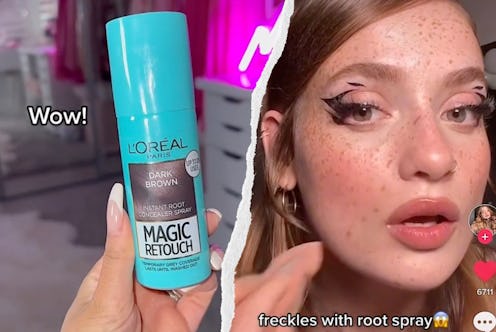Beauty
How To Perfect Faux Freckles, According To TikTok
Using the most unexpected high street product.

TikTok is a mecca for viral beauty trends, from slugging and glass skin to ombre lips and graphic liners. One trend that has stood the test of time is faux freckles. When it first went viral in 2017, beauty lovers were using existing products in their makeup bags, such as eyeliner or brow pencils, to draw faux freckles on their face. Then brands began to cotton on, and offered their own variations such as Lime Crime’s Sunkissed Freckle Pen to Freck’s Faux Freckle OG.
Now, the trend has made a serious comeback on TikTok, with creators sharing new videos of their looks. But this time around, they are using a brand new affordable product that can be found on the high street. Beauty enthusiast Monique Mariek demonstrated the faux freckle effect using the L’Oréal Paris Magic Root Touch Up Spray, a colour spray designed to instantly hide hair regrowth.
The product, which costs just £9 at U.K. retailers such as Superdrug, Boots, Tesco, and LookFantastic, has been highly recommended by hairstylists and industry professionals for its ability to hide grey hair, and root regrowth when in between salon visits. Now, the #sprayonfreckles hashtag has a whopping 35.5 million views at the time of writing, with many hailing this new technique as a “game changer”.
Videos on TikTok show women gently spraying the product on their faces to create a natural looking scatter of freckles using the spray’s pinpoint micro-diffuser. After application, they then gently dab the product into their skin, before perfecting the look by applying finishing powder or setting spray to seal it. The best thing about this beauty hack is that it is buildable, and can be washed off easily with warm water and soap. Want to try it our for yourself? You can shop the product below.
We only include products that have been independently selected by Bustle's editorial team. However, we may receive a portion of sales if you purchase a product through a link in this article.
This article was originally published on